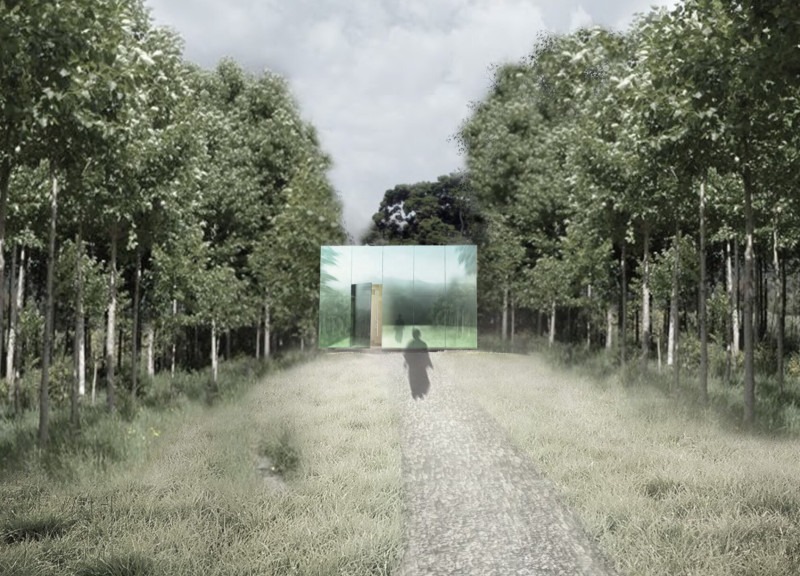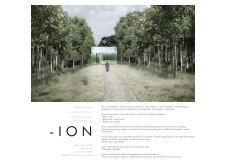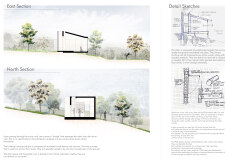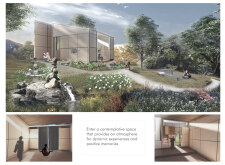5 key facts about this project
The structure features a reflective mirrored façade at the entrance, prompting individuals to confront their own image while symbolically engaging with their thoughts and emotions. The cabin's design is centered around the interaction between the physical space and the natural environment, creating a harmonious balance that invites contemplation.
Unique Design Approaches and Materiality
The -ion Meditation Cabin utilizes innovative materials that contribute to its architectural integrity and sustainability. Key elements include laminated wood beams and columns which provide structural support while enhancing the organic aesthetic of the building. Large glass panels allow natural light to enter the interior, fostering a connection with the surrounding landscape and promoting an open feeling within the meditation space.
Furthermore, the use of prefabricated panels allows for efficient construction and reduced site disruption. Concrete is utilized for foundational anchoring, ensuring stability without compromising the design's minimalist ethos. Recycled materials are integrated into various aspects of the cabin, reflecting a commitment to sustainable design practices.
The design incorporates phase change materials (PCMs) within the walls to regulate temperature efficiently, minimizing energy consumption throughout the year. This attention to environmental performance is a vital aspect of the project, aligning with contemporary architectural practices that prioritize sustainability.
Integration of Natural Elements
An important aspect of the -ion Meditation Cabin is its integration with the surrounding garden, designed to encourage interaction with nature. The garden incorporates Maori symbolism through its layout, including the koru shape, which designates pathways for reflection and exploration. This outdoor space contributes to the overall meditative experience and invites users to engage further with their environment.
Inside the cabin, the layout is designed for versatility, accommodating various uses from solitary meditation to group reflections. Dedicated areas for activities such as crystal storage and herb processing enhance the functionality and user experience. The emphasis on sensory engagement throughout the project—through textures, sounds, and visuals—provides a thoughtful approach to architectural design that transcends conventional boundaries.
For a comprehensive understanding of the -ion Meditation Cabin, including its architectural plans, sections, and designs, readers are encouraged to explore the project presentation further. Detailed insights into the architectural ideas that shaped this unique structure enhance appreciation for its thoughtful design and the philosophy underpinning its creation.


























